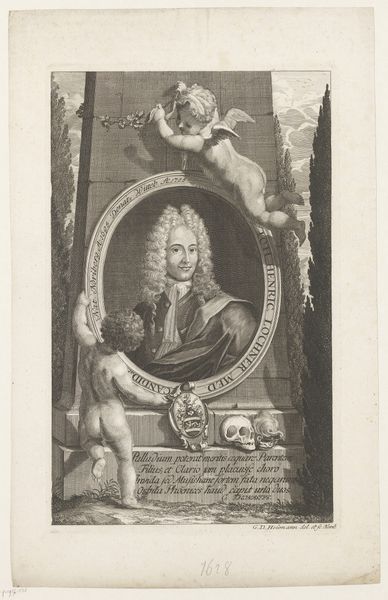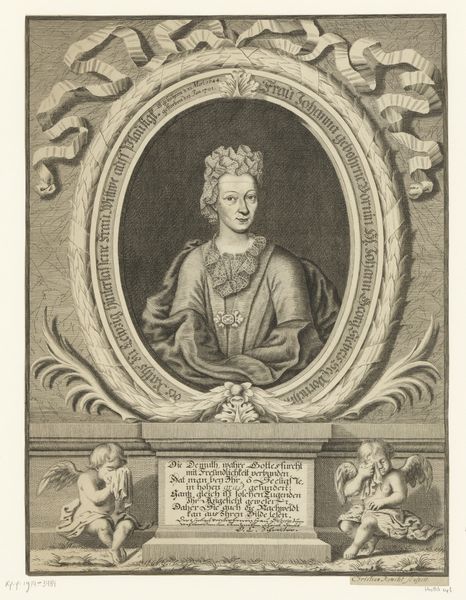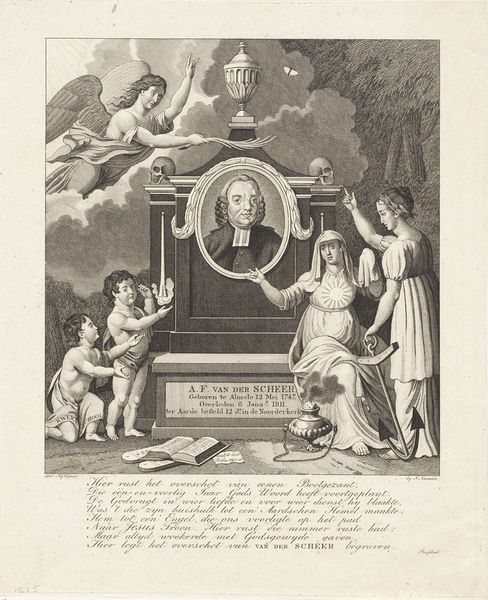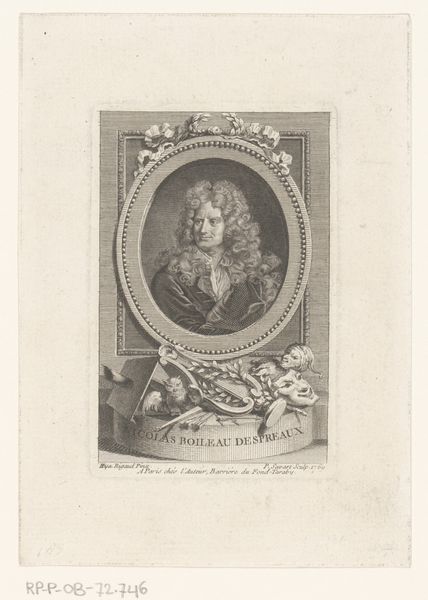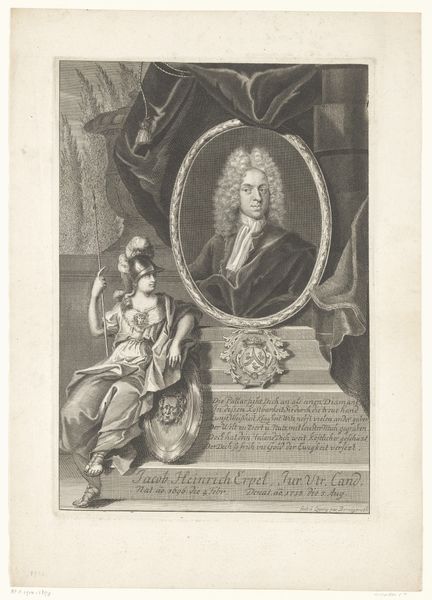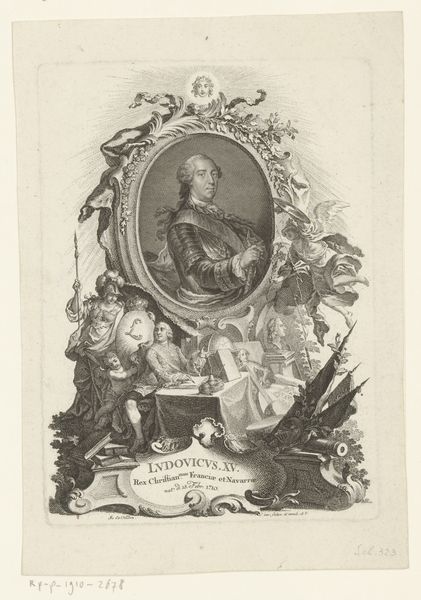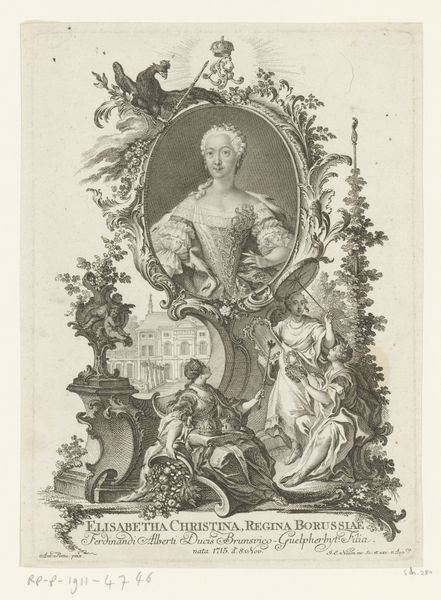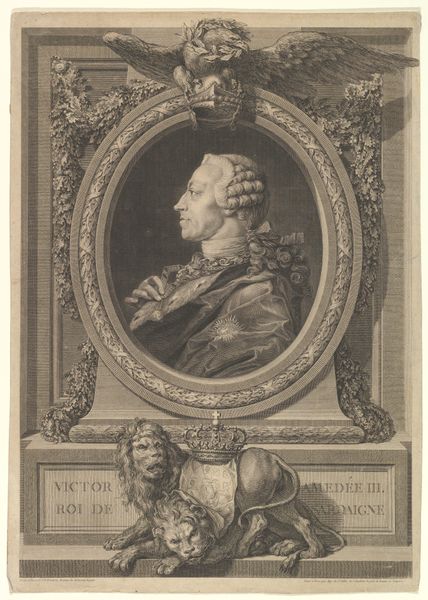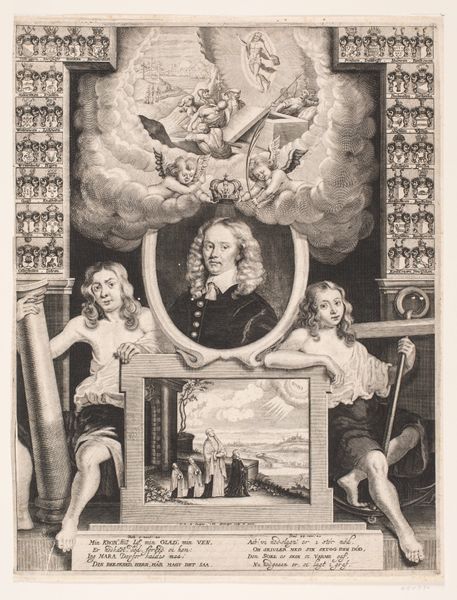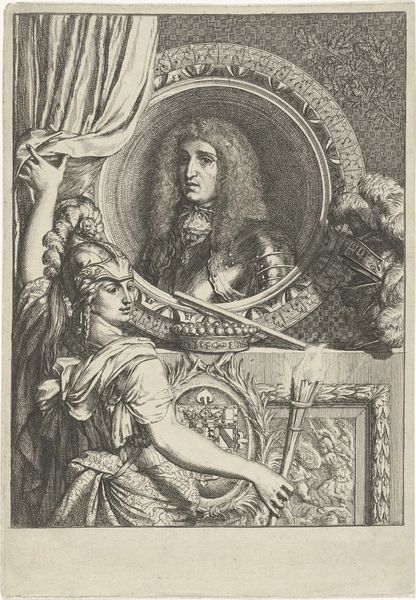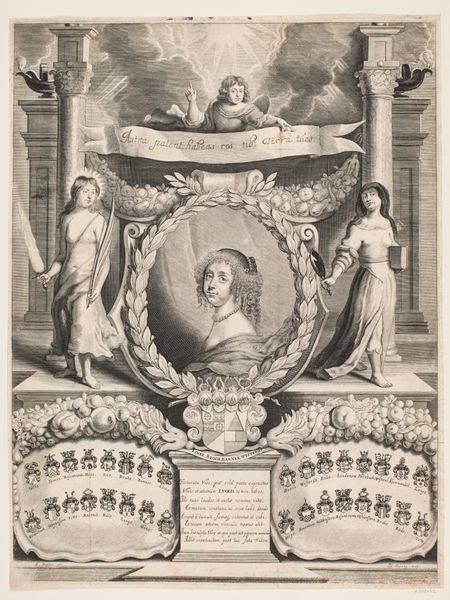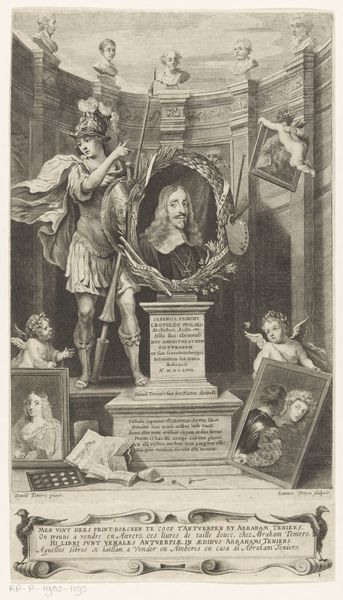
print, engraving
#
portrait
#
allegory
#
baroque
# print
#
old engraving style
#
history-painting
#
engraving
Dimensions: height 183 mm, width 144 mm
Copyright: Rijks Museum: Open Domain
Editor: We're looking at Jacob Houbraken’s "Mourning Portrait of Jakob Zeeus", dating from around 1718 to 1720. It's an engraving. The overall composition feels very formal and theatrical. What strikes you about this piece? Curator: It's a fascinating example of the commemorative prints circulating at the time, designed to shape public memory. This isn’t just a portrait; it's a carefully constructed representation intended to influence how Zeeus was perceived after his death. Notice how it utilizes allegorical figures typical of Baroque imagery to amplify the sense of loss, while suggesting that the memory of the deceased lives on, like a type of "propaganda" for remembrance. Who do you think these symbols are for? Editor: Well, perhaps for Zeeus's family or his close social circle... like commissioning something that burnishes the reputation of the deceased. Curator: Precisely. These prints functioned as social currency, reaffirming status and solidifying alliances. This work operates within a clear economy of grief and commemoration. Houbraken catered to the desires of his patrons. And beyond private mourning, we must also consider how widely the image was circulated – as this determined who got to participate in constructing Zeuus' public persona. Editor: It's like shaping a historical narrative! It makes me think about the power that commissioning art holds to determine collective memory. Curator: Indeed, this work allows us to consider the role prints played in negotiating both personal and collective identities, as well as the role artists like Houbraken had in managing those narratives. We have to understand the agency of the artist within the political climate. Editor: So, this wasn't simply capturing a likeness, but really about actively constructing and distributing a carefully crafted message. Thanks! That reframes the image entirely for me.
Comments
No comments
Be the first to comment and join the conversation on the ultimate creative platform.
